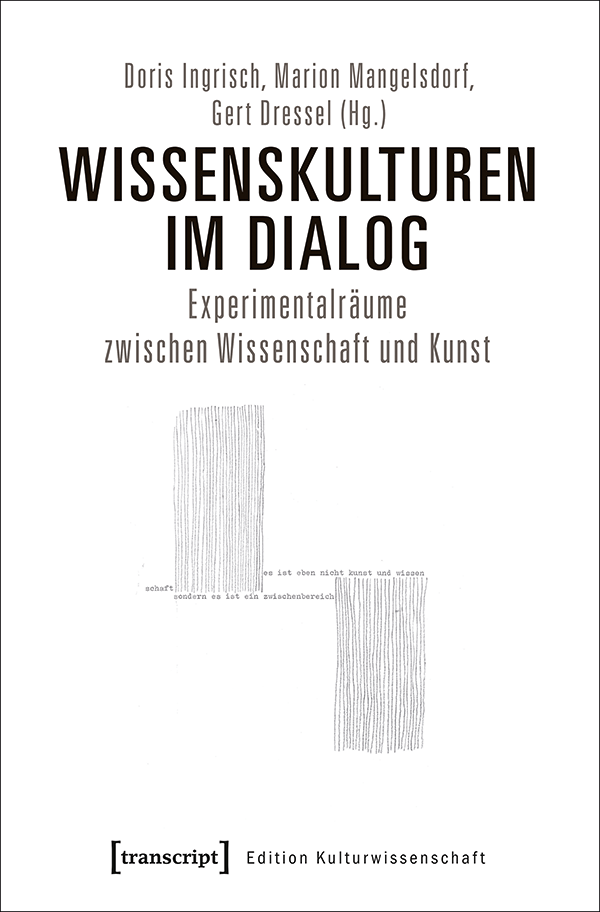Doris Ingrisch, Marion Mangelsdorf, and Gert Dressel, eds., Wissenskulturen im Dialog. Experimentalräume zwischen Wissenschaft und Kunst (Edition Kulturwissenschaft 120), Bielefeld: transcript 2017, German, 270 pages, ISBN 978-3-8376-3698-7.
 This book places dialogue, as a central principle, at the core of thought regarding art and research. Only dialogue—defined as the art of thinking together without preconceived results—gives rise to that realm of possibilities where art and research can realise their potentials in terms of contributing to societal problems’ resolution.
This book places dialogue, as a central principle, at the core of thought regarding art and research. Only dialogue—defined as the art of thinking together without preconceived results—gives rise to that realm of possibilities where art and research can realise their potentials in terms of contributing to societal problems’ resolution.
Its collection of scholarly articles is divided into three thematic sections: on “Experimental Spaces as Epistemological and MethodicalChallenges”, “Testing Cultures of Dialogue”, and “Opening Up and Structuring Experimental Spaces”. Therein, the logics according to which processes of knowledge generation are constructed are challenged, the organisational forms of knowledge, fields of research, and art are addressed, and these areas’ differing “realities” and “truths” are pursued. Furthermore, the hegemonic mode of knowledge generation that functions according to eitheror categories and bipolar and/or dichotomous lines of demarcation is called into question.
Last but not least, this book stands out for its broad-based, transdisciplinary team of editors and authors: social scientists and cultural scholars, historians, journalists, adult educators, art curators, gender researchers, theatre, film, and media scholars, choreographers, dancers, artists, and art figures from Germany, Austria, Switzerland, and the USA.
The individual contributions are, among other things, outcomes of a multi-year process of experimentation and exchange along with the conference trilogy Wissenskulturen im Dialog (Versuchsanordnungen – Umkreisungen – Interferenzen) [Research Cultures in Dialogue (Experimental Designs – Revolutions – Interferences)], with the conferences themselves being utilised as an experimental research format as well as methodologically. At several points, this classic scholarly volume renders experimental thoughts in a graphically and visually experimental manner, such as in its cover’s graphic design (by Lisette Rosenthal), which successfully refers to the “intermediary”, the act of encountering, the hovering suspension of the dialogical between art and scholarship.
The theoretical, practical, and experimental offerings here hold great potential in terms of the critical advancement of today’s crisis-ridden society, as well as for dealing with the phenomenon of the “postfactual” currently undermining the sciences and for countering the arbitrariness of the “anything goes” attitude that threatens to rob the arts, as well, of their sting. This book, which eschews simplified, one-dimensional instructions for action, is a rewarding read that offers much material for further contemplation, contradiction, and dialogue with the known and unknown.

